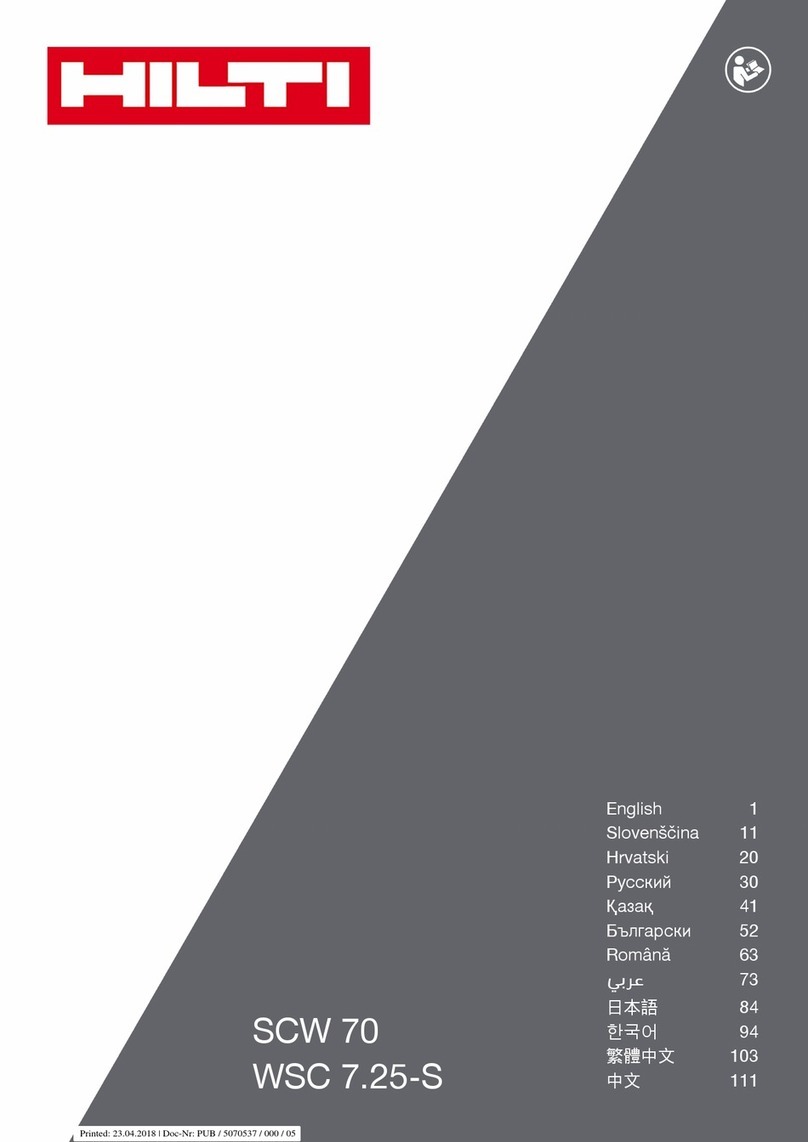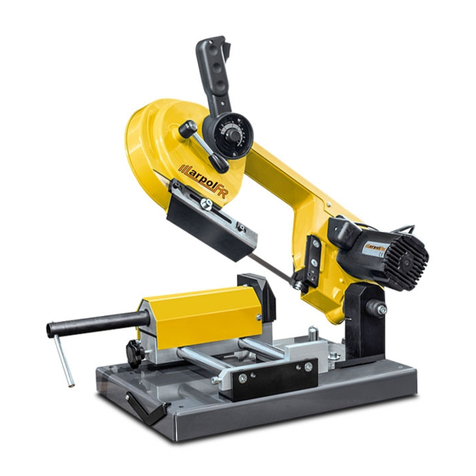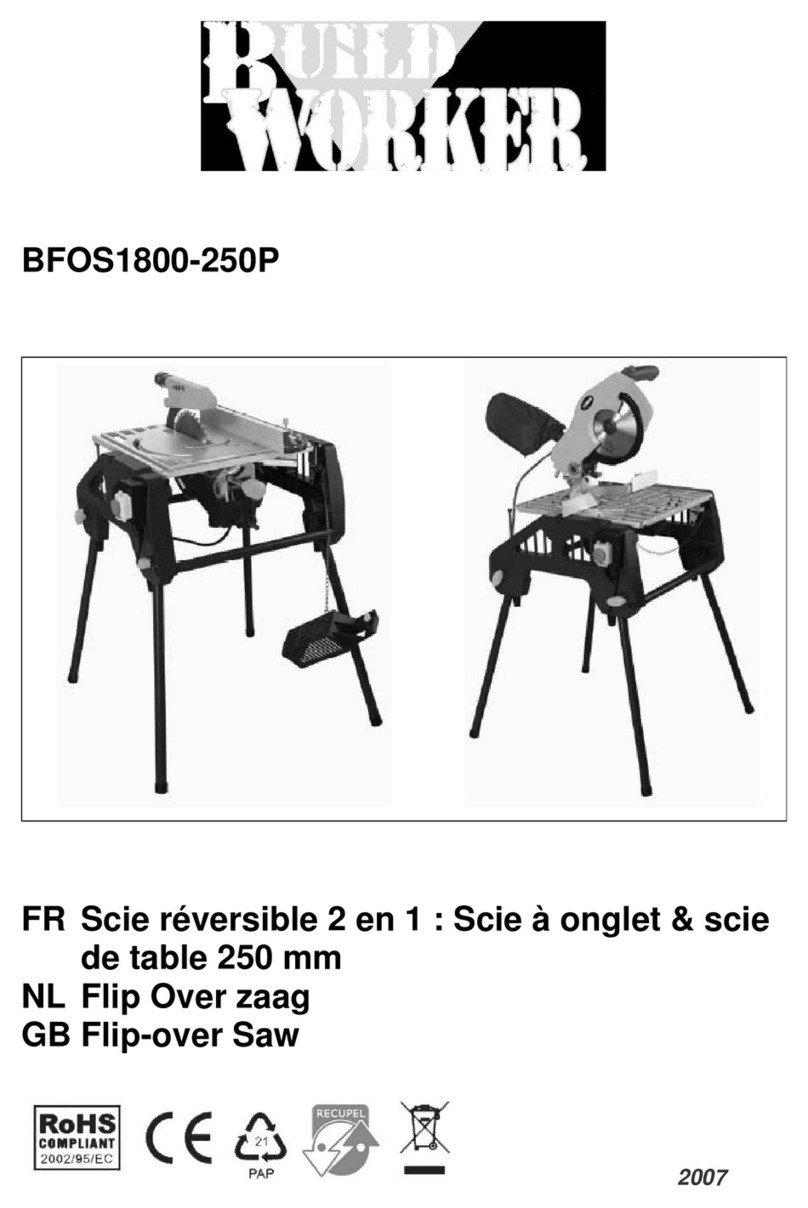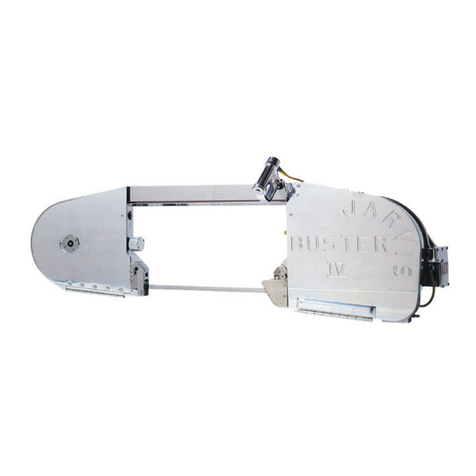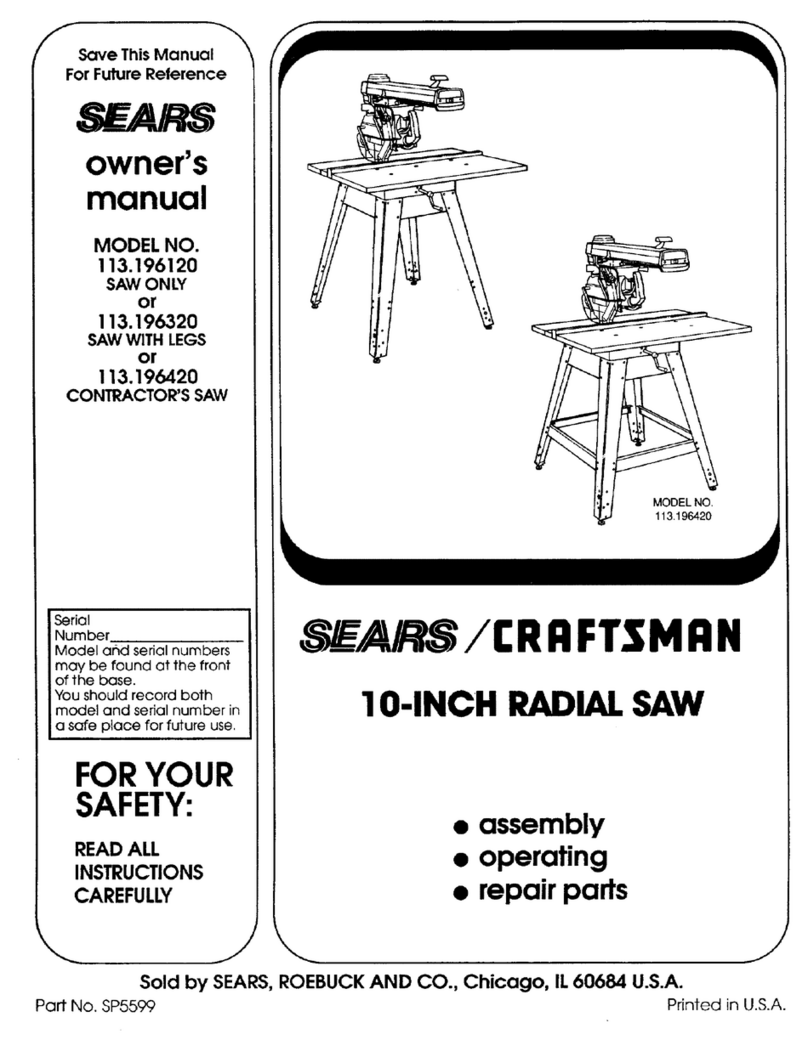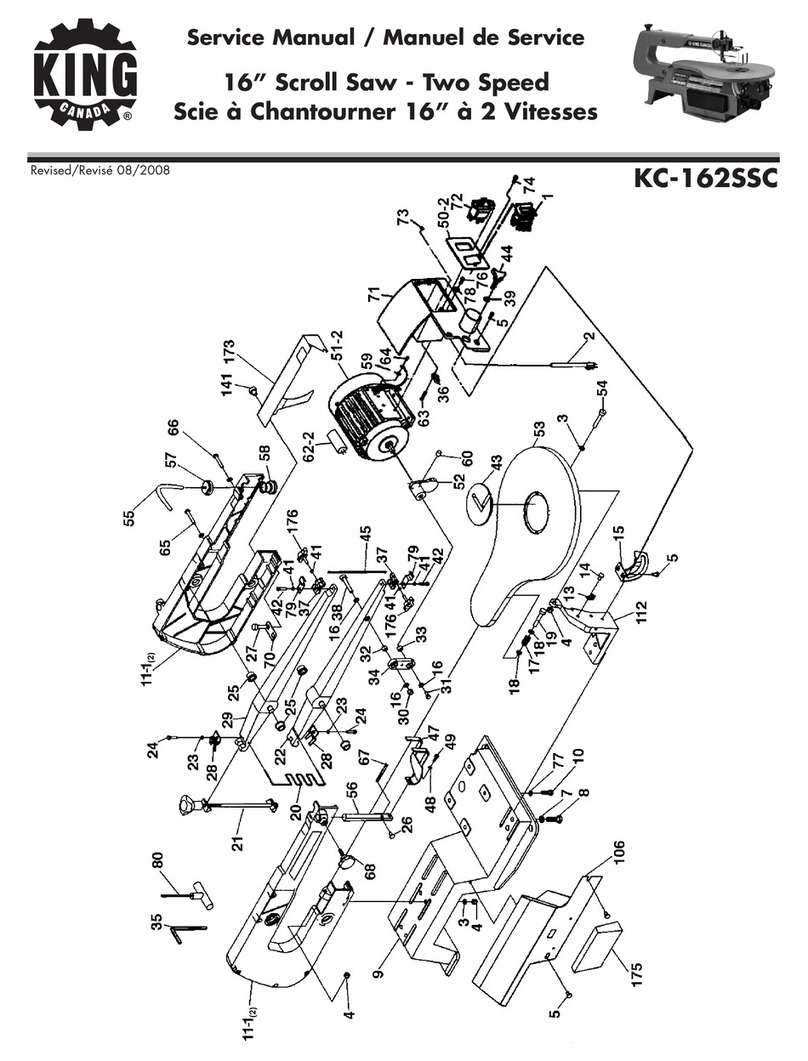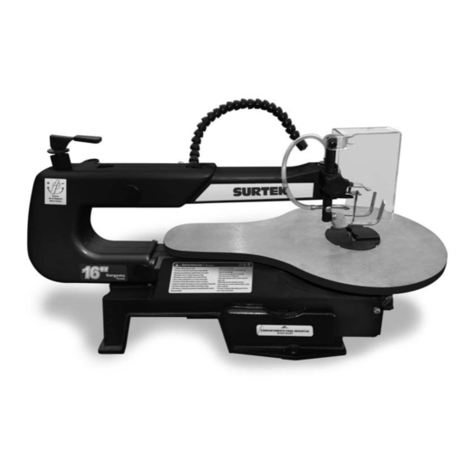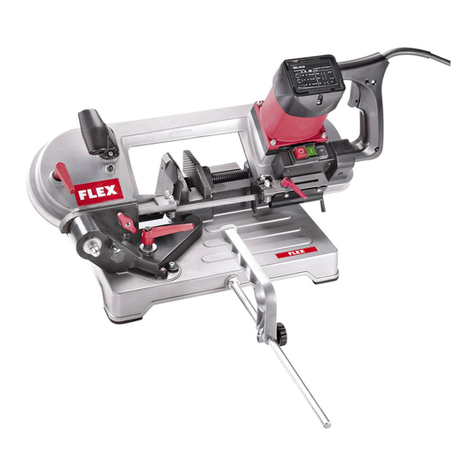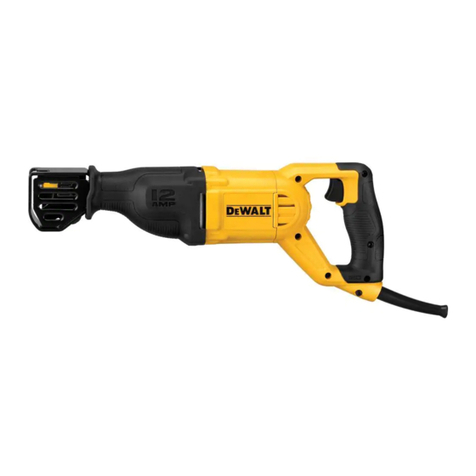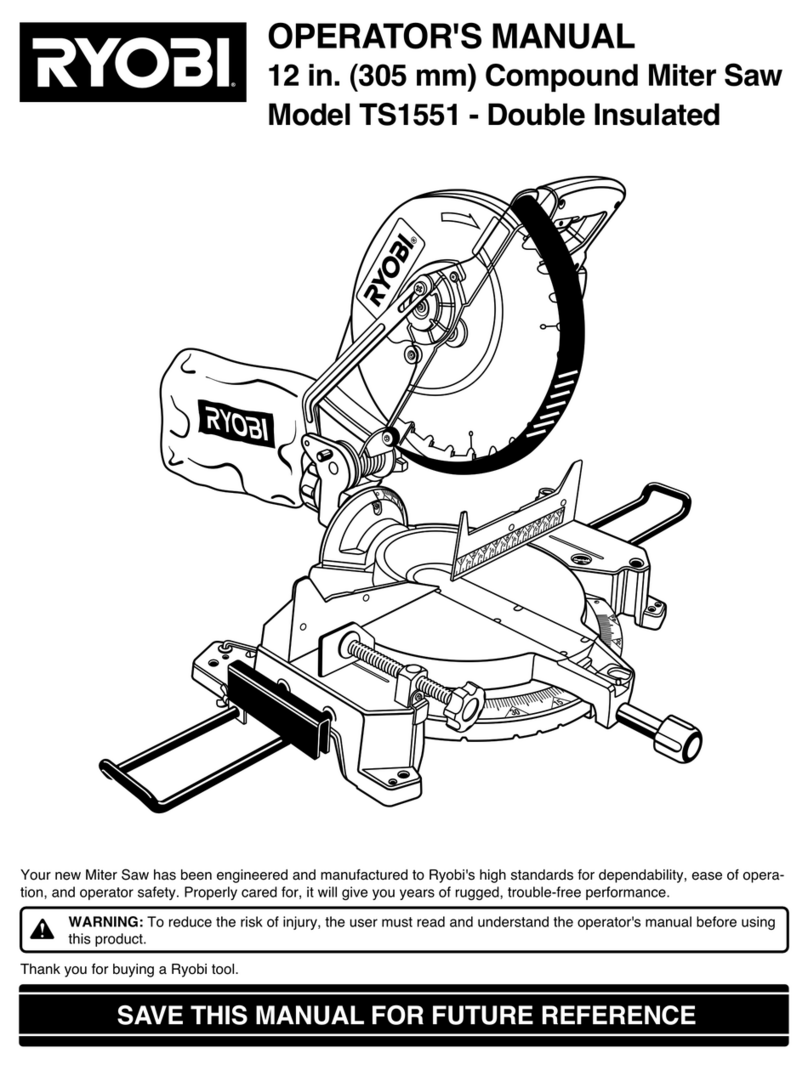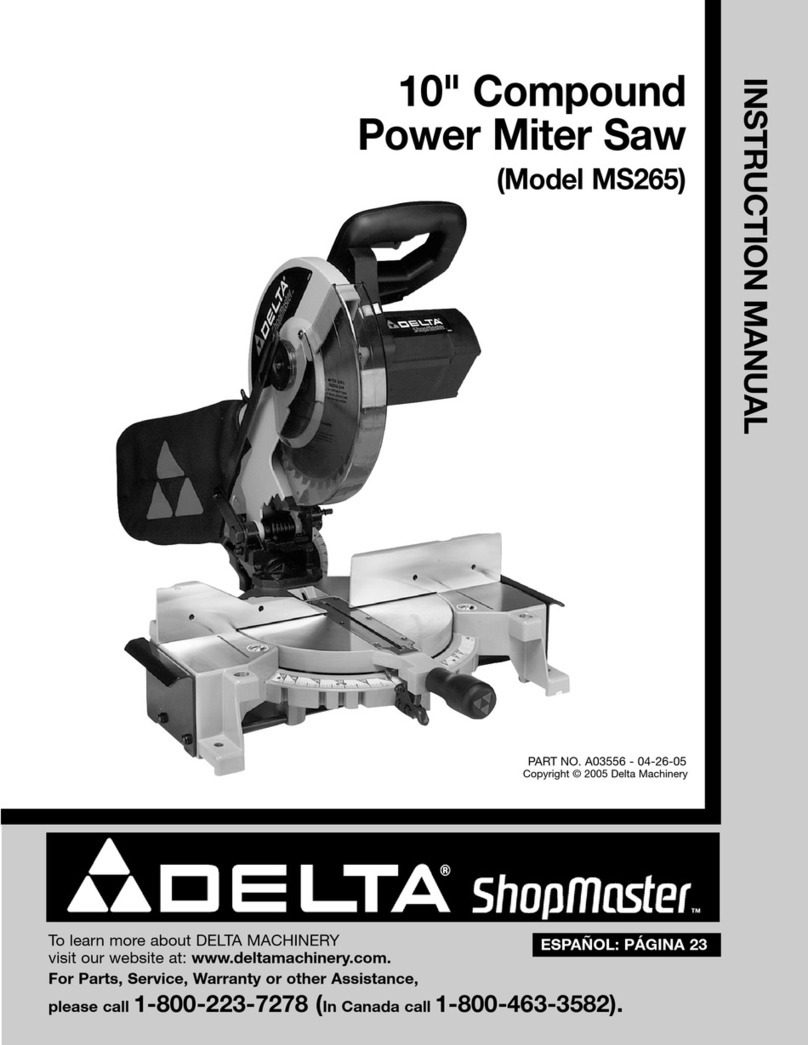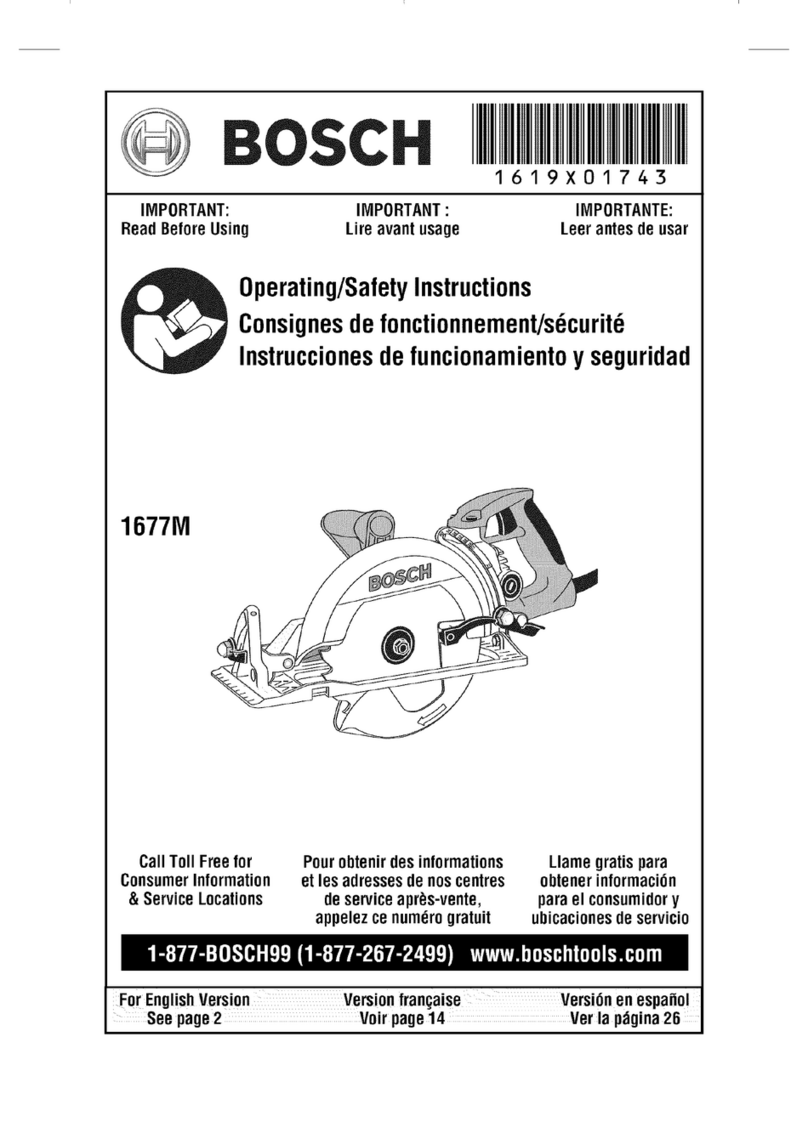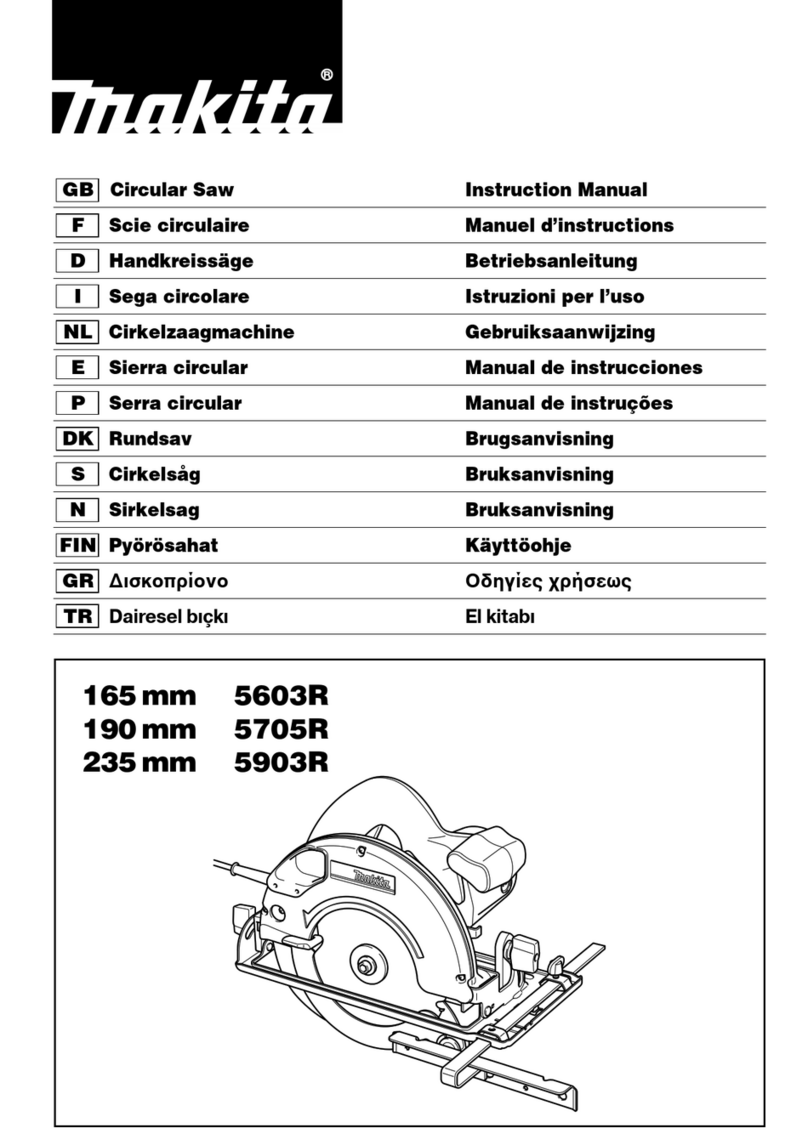Hilti SCO 6-A22 User manual

1

2
3
4
5

6
7
8
9


*2143544* 2143544 English 1
Original operating instructions
1 Information about the documentation
1.1 About this documentation
• Read this documentation before initial operation or use. This is a prerequisite for safe, trouble-free
handling and use of the product.
• Observe the safety instructions and warnings in this documentation and on the product.
• Always keep the operating instructions with the product and make sure that the operating instructions
are with the product when it is given to other persons.
1.2 Explanation of symbols used
1.2.1 Warnings
Warnings alert persons to hazards that occur when handling or using the product. The following signal words
are used:
DANGER
DANGER !
▶Draws attention to imminent danger that will lead to serious personal injury or fatality.
WARNING
WARNING !
▶Draws attention to a potential threat of danger that can lead to serious injury or fatality.
CAUTION
CAUTION !
▶Draws attention to a potentially dangerous situation that could lead to slight personal injury or damage
to the equipment or other property.
1.2.2 Symbols in the documentation
The following symbols are used in this document:
Read the operating instructions before use.
Instructions for use and other useful information
Dealing with recyclable materials
Do not dispose of electric equipment and batteries as household waste
1.2.3 Symbols in the illustrations
The following symbols are used in illustrations:
These numbers refer to the corresponding illustrations found at the beginning of these operating
instructions
The numbering reflects the sequence of operations shown in the illustrations and may deviate
from the steps described in the text
Item reference numbers are used in the overview illustrations and refer to the numbers used in
the product overview section
This symbol is intended to draw special attention to certain points when handling the product.

2 English 2143544 *2143544*
1.3 Product-dependent symbols
1.3.1 Symbols on the product
The following symbols are used on the product:
Wear protective glasses
Direct current (DC)
Rated speed under no load
Revolutions per minute
Revolutions per minute
The product supports wireless data transmission compatible with iOS and Android platforms.
Li-ion battery
Hilti Li-ion battery type series used. Observe the information given in the section headed In-
tended use.
Never use the battery as a striking tool.
Do not drop the battery. Never use a battery that has suffered an impact or is damaged in any
other way.
1.4 Product information
Hilti products are designed for professional use and may be operated, serviced and maintained only by
trained, authorized personnel. This personnel must be specifically informed about the possible hazards. The
product and its ancillary equipment can present hazards if used incorrectly by untrained personnel or if used
not in accordance with the intended use.
The type designation and serial number are printed on the rating plate.
▶Write down the serial number in the table below. You will be required to state the product details when
contacting Hilti Service or your local Hilti organization to inquire about the product.
Product information
Cut-out tool SCO 6-A22
Generation 01
Serial no.
1.5 Declaration of conformity
We declare, on our sole responsibility, that the product described here complies with the applicable directives
and standards. A copy of the declaration issued by the certification department can be found at the end of
this documentation.
The technical documentation is filed here:
Hilti Entwicklungsgesellschaft mbH | Tool Certification | Hiltistrasse 6 | 86916 Kaufering, Germany
2 Safety
2.1 General power tool safety warnings
WARNING
Read all safety warnings and all instructions. Failure to follow the warnings and instructions may result in
electric shock, fire and/or serious injury.
Save all warnings and instructions for future reference.
Work area safety
▶Keep work area clean and well lit. Cluttered or dark areas invite accidents.

*2143544* 2143544 English 3
▶Do not operate power tools in explosive atmospheres, such as in the presence of flammable
liquids, gases or dust. Power tools create sparks which may ignite the dust or fumes.
▶Keep children and bystanders away while operating a power tool. Distractions can cause you to lose
control.
Electrical safety
▶Avoid body contact with earthed or grounded surfaces, such as pipes, radiators, ranges and
refrigerators. There is an increased risk of electric shock if your body is earthed or grounded.
▶Do not expose power tools to rain or wet conditions. Water entering a power tool will increase the
risk of electric shock.
Personal safety
▶Stay alert, watch what you are doing and use common sense when operating a power tool. Do
not use a power tool while you are tired or under the influence of drugs, alcohol or medication. A
moment of inattention while operating power tools may result in serious personal injury.
▶Use personal protective equipment. Always wear eye protection. Protective equipment such as dust
mask, non-skid safety shoes, hard hat, or hearing protection used for appropriate conditions will reduce
personal injuries.
▶Prevent unintentional starting. Ensure the switch is in the off‐position before connecting to battery
pack, picking up or carrying the tool. Carrying power tools with your finger on the switch or energising
power tools that have the switch on invites accidents.
▶Remove any adjusting key or wrench before turning the power tool on. A wrench or a key left
attached to a rotating part of the power tool may result in personal injury.
▶Do not overreach. Keep proper footing and balance at all times. This enables better control of the
power tool in unexpected situations.
▶Dress properly. Do not wear loose clothing or jewellery. Keep your hair, clothing and gloves away
from moving parts. Loose clothes, jewellery or long hair can be caught in moving parts.
▶If devices are provided for the connection of dust extraction and collection facilities, ensure these
are connected and properly used. Use of dust collection can reduce dust-related hazards.
Power tool use and care
▶Do not force the power tool. Use the correct power tool for your application. The correct power tool
will do the job better and safer at the rate for which it was designed.
▶Do not use the power tool if the switch does not turn it on and off. Any power tool that cannot be
controlled with the switch is dangerous and must be repaired.
▶Disconnect the battery pack from the power tool before making any adjustments, changing
accessories, or storing power tools. Such preventive safety measures reduce the risk of starting the
power tool accidentally.
▶Store idle power tools out of the reach of children and do not allow persons unfamiliar with the
power tool or these instructions to operate the power tool. Power tools are dangerous in the hands
of untrained users.
▶Maintain power tools. Check for misalignment or binding of moving parts, breakage of parts and
any other condition that may affect the power tool’s operation. If damaged, have the power tool
repaired before use. Many accidents are caused by poorly maintained power tools.
▶Keep cutting tools sharp and clean. Properly maintained cutting tools with sharp cutting edges are
less likely to bind and are easier to control.
▶Use the power tool, accessories and tool bits etc. in accordance with these instructions, taking
into account the working conditions and the work to be performed. Use of the power tool for
operations different from those intended could result in a hazardous situation.
Battery tool use and care
▶Recharge only with the charger specified by the manufacturer. A charger that is suitable for one type
of battery pack may create a risk of fire when used with another battery pack.
▶Use power tools only with specifically designated battery packs. Use of any other battery packs may
create a risk of injury and fire.
▶When battery pack is not in use, keep it away from other metal objects, like paper clips, coins,
keys, nails, screws or other small metal objects, that can make a connection from one terminal to
another. Shorting the battery terminals together may cause burns or a fire.
▶Under abusive conditions, liquid may be ejected from the battery; avoid contact. If contact
accidentally occurs, flush with water. If liquid contacts eyes, additionally seek medical help. Liquid
ejected from the battery may cause irritation or burns.

4 English 2143544 *2143544*
Service
▶Have your power tool serviced by a qualified repair person using only identical replacement parts.
This will ensure that the safety of the power tool is maintained.
2.2 Additional safety instructions for cut-out tools
▶Use clamps or another some other practical way to secure and support the workpiece to a stable
platform. Holding the work by your hand or against the body leaves it unstable and may lead to loss of
control.
Personal safety
▶Use the tool only when it is in perfect working order.
▶Never tamper with or modify the tool in any way.
▶Always hold the tool firmly with both hands on the insulated grips provided. Keep the grips clean and
dry.
▶Do not touch rotating parts – risk of injury!
▶Wear suitable protective glasses, a hard hat, ear protection, protective gloves and light respiratory
protection while using the power tool.
▶Do not look directly into the light source (LEDs) of the cut-out tool and do not aim the beam at other
persons’ faces. Risk of dazzling or eye damage.
▶Never touch the clamping nut or collet when the accessory tool gets stuck and stalls.
▶Take breaks and do physical exercises to improve the blood circulation in your fingers. Exposure to
vibration during long periods of work can lead to disorders of the blood vessels and nervous system in
the fingers, hands and wrists.
▶The power tool is not intended for use by debilitated persons who have received no special training.
Keep the power tool out of reach of children.
▶If work involves break-through, always secure the area on the side opposite where the work is carried
out. Pieces of debris could drop out and/or fall down and injure other persons.
▶Slits cut into load-bearing walls or other structures can influence the statics of the structure, especially
when reinforcing bars or load-bearing components are cut. Consult the responsible structural engineer,
architect or person in charge of the building project before starting work.
▶Before switching on the tool, check that the collet is fitted and that the clamping nut is tightened.
▶Use only accessory tools with the correct shank diameter and of a type suitable for the speed of the
power tool.
▶Check that accessory tools are compatible with the power tool’s chuck/drive system and that they are
fitted and secured correctly.
▶Before starting work, check the hazard class of the dust that will be produced when working. Use
an industrial vacuum cleaner with an officially approved protection class in compliance with the locally
applicable dust protection regulations.
▶Use a dust removal system and suitable mobile dust extractor whenever possible. Dust from materials
such as lead-based paint, certain types of wood and concrete/masonry/stone containing quartz, minerals
or metal can be harmful to health.
▶Make sure that the workplace is well ventilated and, where necessary, wear a respirator appropriate for
the type of dust generated. Contact with or inhalation of the dust can cause allergic reactions and/or
respiratory or other diseases among operators or bystanders. Certain kinds of dust such as oakwood
and beechwood dust are classified as carcinogenic, especially in conjunction with additives for wood
conditioning (chromate, wood preservative). Only specialists are permitted to handle material containing
asbestos.
▶To avoid risk of injury, use only genuine Hilti accessories and accessory tools.
▶Comply with national health and safety requirements.
Electrical safety
▶Before beginning work, check the working area for concealed electric cables or gas and water pipes.
External metal parts of the power tool can become live, presenting a risk of electric shock, if you
accidentally damage an electric cable.
Power tool use and care
▶Immediately switch off the power tool if the accessory tool jams. The power tool might twist off-line.
▶Wait until the power tool stops completely before you lay it down.

*2143544* 2143544 English 5
2.3 Battery use and care
▶Observe the special guidelines applicable to the transport, storage and use of Li-ion batteries.
▶Do not expose batteries to high temperatures, direct sunlight or fire.
▶Do not disassemble, crush or incinerate batteries and do not subject them to temperatures over 80 °C.
▶Do not use or charge batteries that have suffered mechanical impact, have been dropped from a height
or show signs of damage. In this case, always contact your Hilti Service.
▶If the battery is too hot to touch it may be defective. Put the battery in a place where it is clearly visible
and where there is no risk of fire, at an adequate distance from flammable materials. Allow the battery to
cool down. If it is still too hot to touch after an hour, the battery is faulty. Contact Hilti Service.
3 Description
3.1 Overview of the product 1
@Vacuum cleaner hose connector (accessory)
;LED lights
=Depth gauge
%Securing screw
&On/off switch
(Switch-on interlock release button
)Accessory tool
+Collet
§Clamping nut
/Insulated gripping surface
:Spindle lockbutton
∙Insulated gripping surface
$Air vents
£Release button with additional function
(charge state display activation)
|Battery
3.2 Intended use
The product described is a hand-held cordless cut-out tool. It is designed for making cut-outs in drywall
board, gypsum fiber board, composite materials and wood or wood-like materials.
The product can be equipped with a removable connector for an optional vacuum cleaner / dust removal
hose. This connector is designed to fit standard vacuum cleaner hoses. Use of a suitable adapter may be
necessary in order to connect a vacuum cleaner hose to the product.
▶Use only Hilti Liion batteries of the B 18 / B 22 series with this product.
▶Use only Hilti battery chargers of the C4/36 series for charging these batteries.
3.3 Items supplied
Cut-out tool, depth gauge, three collets (1/8", 5/32", 1/4"), clamping nut, hex. key, operating instructions.
Other system products approved for use with this product can be found at your local Hilti Center or online
at: www.hilti.com

6 English 2143544 *2143544*
3.4 Safety devices
This product has a motor protection system. It monitors current consumption and motor temperature and
prevents the product from overheating.
If the motor is overloaded through application of excessive working pressure, the product’s performance
drops noticeably or it might stall completely.
If the power tool stalls or slows significantly due to overloading, release the pressure applied to the product
and then allow it to run under no load for approx. 30 seconds.
4 Consumables
The following accessory tools can be used with the cut-out tool:
Drywall
• Guidepoint bit (1/8")
• Standard bit (1/8")
• Universal guidepoint bit (5/32")
• Window/door guidepoint bit (1/4")
Metal
• Metal bit (5/32")
5 Technical data
SCO 6-A22
Rated voltage 21.6 V
Rated speed under no load 30,000 /min
Operating temperature 1 ℉ … 140 ℉
(−17 ℃ … 60 ℃)
Storage temperature −4 ℉ … 158 ℉
(−20 ℃ … 70 ℃)
Weight 3.1 lb
(1.4 kg)
Clamping nut 5/8" external hexagon
Collet diameter 1/8", 5/32", 1/4"
Cutting bit shank diameter 1/8", 5/32", 1/4"
Battery operating temperature 1 ℉ … 140 ℉
(−17 ℃ … 60 ℃)
Battery charging starting temperature 14 ℉ … 113 ℉
(−10 ℃ … 45 ℃)
Battery storage temperature −4 ℉ … 104 ℉
(−20 ℃ … 40 ℃)
6 Operation
6.1 Preparations at the workplace
CAUTION
Risk of injury by inadvertent starting!
▶Before inserting the battery, make sure that the product is switched off.
▶Remove the battery before making any adjustments to the power tool or before changing accessories.
Observe the safety instructions and warnings in this documentation and on the product.
6.1.1 Inserting the battery 2
1. Push the battery into the battery holder until it engages with an audible click.
2. Check that the battery is seated securely.

*2143544* 2143544 English 7
6.1.2 Removing the battery 3
1. Press the release buttons on the battery.
2. Pull the battery out toward the rear.
6.1.2.1 Fitting an accessory tool 4
ATTENTION
Risk of damage. The collet can break if tightened when no accessory tool is fitted.
▶Never tighten the collet when no accessory tool is fitted.
1. Clean the connection end of the accessory tool.
2. Check that the collet has been fitted.
3. Press the spindle lockbutton and hold it in this position.
4. Insert the accessory tool in the collet and tighten the clamping nut with the hex. wrench.
5. Release the spindle lockbutton.
6. Check that the accessory tool is held securely.
6.1.3 Removing the accessory tool
CAUTION
Risk of injury! The accessory tool may be hot and/or have sharp edges.
▶Wear protective gloves when changing the accessory tool.
▶Never lay down a hot accessory tool on a flammable surface.
1. Press the spindle lockbutton and hold it in this position.
2. Use the hex. wrench to release the clamping nut.
▶The collet is slack.
3. Remove the accessory tool.
6.1.4 Changing the collet 5
1. Press the spindle lockbutton and hold it in this position.
2. Use a hex. wrench to release and remove the clamping nut.
3. Remove the existing collet and fit the collet you wish to use.
4. Screw on and tighten the clamping nut and then release the spindle lockbutton.
6.1.5 Installing the depth gauge 6
WARNING
Risk of injury! A damaged depth gauge may present a risk of inadvertent contact with the accessory tool.
▶Do not use the power tool if the depth gauge is defective.
1. Hold the depth gauge in position on the product and tighten the securing screw.
2. Slacken the securing screw to adjust the depth gauge.
3. Slide the depth gauge to the desired position and re-tighten the securing screw.
4. Before starting, make sure that the space behind the workpiece is enough to keep the accessory tool
from contacting a hard object.
6.1.6 Installing the vacuum cleaner hose connector 7
1. Remove the accessory tool. → page 7
2. Install the hose connector on the product and set the connector to the desired position.
3. Engage the retaining lugs.
6.2 Types of work
ATTENTION
Risk of damage by incorrect handling!
▶Do not operate the switches for direction of rotation and/or function selection during operation.
Observe the safety instructions and warnings in this documentation and on the product.

8 English 2143544 *2143544*
6.2.1 Holding the product correctly 8
1. Use clamps or some other practical means to secure the workpiece and keep it in a stable position.
2. Use both hands to hold the product firmly when working.
▶The product can become unstable if you attempt to hold it with only one hand or pressed against a
part of the body and this can result in loss of control.
6.2.2 Switching on 9
The on / off switch with safety lock (switch-on interlock) gives you full control of the switch function
and avoids unintentional starting.
1. Push the safety lock forward.
▶The on/off switch is unlocked.
2. Press the on/off switch as far as it will go.
▶The power tool’s motor runs at no-load speed.
6.2.3 Switching off
▶Release the on/off switch.
▶The safety lock jumps automatically into the locked position.
6.2.4 Operation
1. Hold the product firmly without the accessory tool contacting the working surface.
2. Switch on. → page 8
3. Guide the accessory tool straight into the material in which the cut-out is to be made, until the depth
gauge is in contact with the working surface.
4. Applying steady pressure, advance the accessory tool.
7 Care and maintenance
WARNING
Risk of injury with battery inserted !
▶Always remove the battery before carrying out care and maintenance tasks!
Care and maintenance of the tool
• Carefully remove stubborn dirt.
• Clean the air vents carefully with a dry brush.
• Use only a slightly damp cloth to clean the casing. Do not use cleaning agents containing silicone as
these can attack the plastic parts.
Care of the Liion batteries
• Keep the battery free from oil and grease.
• Use only a slightly damp cloth to clean the casing. Do not use cleaning agents containing silicone as
these may attack the plastic parts.
• Avoid ingress of moisture.
Maintenance
• Check all visible parts and controls for signs of damage at regular intervals and make sure that they all
function correctly.
• Do not operate the product if signs of damage are found or if parts malfunction. Have it repaired
immediately by Hilti Service.
• After cleaning and maintenance, fit all guards or protective devices and check that they function correctly.
To help ensure safe and reliable operation, use only genuine Hilti spare parts and consumables. Spare
parts, consumables and accessories approved by Hilti for use with the product can be found at your
local Hilti Store or online at: www.hilti.group.

*2143544* 2143544 English 9
8 Transport and storage of cordless tools
Transport
CAUTION
Accidental starting during transport !
▶Always transport your products with the batteries removed!
▶Remove the battery.
▶Never transport batteries in bulk form (loose, unprotected).
▶Check the tool and batteries for damage before use after long periods of transport.
Storage
CAUTION
Accidental damage caused by defective or leaking batteries !
▶Always store your products with the batteries removed!
▶Store the tool and batteries in a place that is as cool and dry as possible.
▶Never store batteries in direct sunlight, on heating units or behind a window pane.
▶Store the tool and batteries in a place where they cannot be accessed by children or unauthorized
persons.
▶Check the tool and batteries for damage before use after long periods of storage.
9 Troubleshooting
If the trouble you are experiencing is not listed in this table or you are unable to remedy the problem by
yourself, please contact Hilti Service.
9.1 Troubleshooting
Trouble or fault Possible cause Action to be taken
The battery runs down more
quickly than usual.
Very low ambient temperature. ▶Allow the battery to warm up
slowly to room temperature.
The battery doesn’t engage
with an audible click.
The retaining lugs on the battery
are dirty.
▶Clean the retaining lugs and refit
the battery.
1 LED blinks.
The power tool doesn’t run.
Low battery. ▶Change the battery and charge
the empty battery.
The battery is too hot or too cold. ▶Allow the battery to cool down
or warm up slowly to room
temperature.
All 4 LEDs blink.
The power tool doesn’t run.
The tool has been overloaded. ▶Release the control switch and
then press it again. Then allow
the power tool to run under no
load for approx. 30 seconds.
The cut-out tool or the battery
get very hot.
Electrical fault. ▶Switch the power tool off im-
mediately, remove the battery,
keep it under observation, allow
it to cool down and contact Hilti
Service.
The motor has no braking
effect.
Low battery. ▶Change the battery and charge
the empty battery.
The power tool was overloaded
briefly.
▶Release the on/off switch and
then press it again.
10 Disposal
Most of the materials from which Hilti tools and appliances are manufactured can be recycled. The
materials must be correctly separated before they can be recycled. In many countries, your old tools,
machines or appliances can be returned to Hilti for recycling. Ask Hilti Service or your Hilti representative
for further information.

10 Français 2143544 *2143544*
Battery disposal
Improper disposal of batteries can result in health hazards from leaking gases or fluids.
▶DO NOT send batteries through the mail!
▶Cover the terminals with a non-conductive material (such as electrical tape) to prevent short circuiting.
▶Dispose of your battery out of the reach of children.
▶Dispose of the battery at your Hilti Store, or consult your local governmental garbage disposal or public
health and safety resources for disposal instructions.
▶Do not dispose of power tools, electronic equipment or batteries as household waste!
11 Manufacturer’s warranty
▶Please contact your local Hilti representative if you have questions about the warranty conditions.
Mode d'emploi original
1 Indications relatives à la documentation
1.1 À propos de cette documentation
• Lire intégralement la présente documentation avant la mise en service. C'est la condition préalablement
requise pour assurer la sécurité du travail et un maniement sans perturbations.
• Bien respecter les consignes de sécurité et les avertissements de la présente documentation ainsi que
celles figurant sur le produit.
• Toujours conserver le mode d'emploi à proximité du produit et uniquement le transmettre à des tiers
avec ce mode d'emploi.
1.2 Explication des symboles
1.2.1 Avertissements
Les avertissements attirent l'attention sur des dangers liés à l'utilisation du produit. Les termes de
signalisation suivants sont utilisés :
DANGER
DANGER !
▶Pour un danger imminent qui peut entraîner de graves blessures corporelles ou la mort.
AVERTISSEMENT
AVERTISSEMENT !
▶Pour un danger potentiel qui peut entraîner de graves blessures corporelles ou la mort.
ATTENTION
ATTENTION !
▶Pour attirer l'attention sur une situation pouvant présenter des dangers entraînant des blessures
corporelles légères ou des dégâts matériels.
1.2.2 Symboles dans la documentation
Les symboles suivants sont utilisés dans la présente documentation :
Lire le mode d'emploi avant d'utiliser l'appareil
Pour des conseils d'utilisation et autres informations utiles
Maniement des matériaux recyclables

*2143544* 2143544 Français 11
Ne pas jeter les appareils électriques et les accus dans les ordures ménagères
1.2.3 Symboles dans les illustrations
Les symboles suivants sont utilisés dans les illustrations :
Ces chiffres renvoient à l'illustration correspondante au début du présent mode d'emploi
La numérotation détermine la séquence des étapes de travail dans l'image et peut se différencier
de celles des étapes de travail dans le texte
Les numéros de position sont utilisés dans l'illustration Vue d’ensemble et renvoient aux numé-
ros des légendes dans la section Vue d'ensemble du produit
Ce signe doit inviter à manier le produit en faisant particulièrement attention.
1.3 Symboles spécifiques au produit
1.3.1 Symboles sur le produit
Les symboles suivants sont utilisés sur le produit :
Porter des lunettes de protection
Courant continu
Vitesse nominale à vide
Tours par minute
Tours par minute
Le produit prend en charge la transmission de données sans fil qui est compatible avec les
plates-formes iOS et Android.
Accu Li-Ion
Série de type d'accu Li-Ion Hilti utilisée. Observer les indications au chapitre Utilisation
conforme à l'usage prévu.
Ne jamais utiliser l'accu comme outil de percussion.
Ne pas laisser tomber l'accu. Ne pas utiliser d'accu ayant subi un choc ou d'autres dommages.
1.4 Informations produit
Les produits Hilti sont destinés aux professionnels et ne doivent être utilisés, entretenus et réparés que par
un personnel autorisé et formé. Ce personnel doit être au courant des dangers inhérents à l'utilisation de
l'appareil. Le produit et ses accessoires peuvent s'avérer dangereux s'ils sont utilisés de manière incorrecte
par un personnel non qualifié ou de manière non conforme à l'usage prévu.
La désignation du modèle et le numéro de série figurent sur sa plaque signalétique.
▶Inscrivez le numéro de série dans le tableau suivant. Les informations produit vous sont demandées
lorsque vous contactez nos revendeurs ou services après-vente.
Caractéristiques produit
Fraiseuse plaquiste SCO 6-A22
Génération 01
N° de série

12 Français 2143544 *2143544*
1.5 Déclaration de conformité
Nous déclarons sous notre seule et unique responsabilité que le produit décrit ici est conforme aux directives
et normes en vigueur. Une copie de l'attestation délivrée par l'organisme de certification se trouve en fin de
la présente documentation.
Pour obtenir les documentations techniques, s'adresser à :
Hilti Entwicklungsgesellschaft mbH | Zulassung Geräte | Hiltistraße 6 | 86916 Kaufering, DE
2 Sécurité
2.1 Indications générales de sécurité pour les appareils électriques
AVERTISSEMENT ! Lire et comprendre toutes les consignes de sécurité et instructions. Tout
manquement à l'observation des consignes de sécurité et instructions risque de provoquer une électrocution,
un incendie et/ou de graves blessures.
Conservez toutes les consignes de sécurité et instructions.
Sécurité sur le lieu de travail
▶Conserver la zone de travail propre et bien éclairée. Un lieu de travail en désordre ou mal éclairé
augmente le risque d'accidents.
▶Ne pas faire fonctionner les outils électriques en atmosphère explosive et où se trouvent des
liquides, des gaz ou poussières inflammables. Les outils électriques produisent des étincelles qui
peuvent enflammer les poussières ou les fumées.
▶Maintenir les enfants et les personnes présentes à l'écart pendant l'utilisation de l'outil électro-
portatif. En cas d'inattention il y a risque de perdre le contrôle de l'appareil.
Sécurité relative au système électrique
▶Éviter les contacts du corps avec des surfaces mises à la terre tels que tuyaux, radiateurs,
cuisinières et réfrigérateurs. Il y a un risque élevé de choc électrique au cas où votre corps serait relié
à la terre.
▶Ne pas exposer les outils électroportatifs à la pluie ou à l'humidité. La pénétration d'eau à l'intérieur
d'un outil électroportatif augmente le risque d'un choc électrique.
Sécurité des personnes
▶Rester vigilant, surveiller ce que l'on fait. Faire preuve de bon sens en utilisant l'outil électrique.
Ne pas utiliser l'outil électrique en étant fatigué ou sous l'emprise de l'alcool, de drogues ou
de médicaments. Un moment d'inattention lors de l'utilisation de l'outil électrique peut entraîner des
blessures graves.
▶Utiliser un équipement de sécurité et toujours porter une protection pour les yeux. Les équipements
de protection personnels tels que masque antipoussière, chaussures de sécurité antidérapantes, casque
de protection ou protection acoustique suivant l'utilisation de l'outil électroportatif, réduiront le risque de
blessures des personnes.
▶Éviter une mise en service par mégarde. S'assurer que l'outil électrique est arrêté avant de le
brancher à l'accu, de le prendre ou de le porter. Le fait de porter l'outil électroportatif avec le doigt
sur l'interrupteur ou de brancher l'appareil sur la source de courant lorsque l'interrupteur est en position
de fonctionnement peut entraîner des accidents.
▶Retirer tout outil de réglage ou toute clé avant de mettre l'outil électroportatif en fonctionnement.
Une clé ou un outil se trouvant sur une partie en rotation peut causer des blessures.
▶Adopter une bonne posture. Veiller à toujours garder une position stable et équilibrée. Cela permet
un meilleur contrôle de l'outil électroportatif dans des situations inattendues.
▶S'habiller de manière adaptée. Ne pas porter de vêtements amples ni de bijoux. Garder les
cheveux, les vêtements et les gants à distance des parties en mouvement. Des vêtements amples,
des bijoux ou des cheveux longs peuvent être happés par des parties en mouvement.
▶Si des dispositifs servant à aspirer ou à recueillir les poussières doivent être utilisés, s'assurer
qu'ils sont effectivement raccordés et correctement utilisés. L'utilisation d'un dispositif d'aspiration
de la poussière peut réduire les risques dus aux poussières.
Utilisation et maniement de l'outil électroportatif
▶Ne pas forcer l'appareil. Utiliser l'outil électroportatif adapté au travail à effectuer. Un outil
électroportatif approprié réalisera mieux le travail et de manière plus sûre au régime pour lequel il a été
conçu.
▶Ne pas utiliser d'outil électroportatif dont l'interrupteur est défectueux. Tout outil électroportatif qui
ne peut plus être mis en ou hors fonctionnement est dangereux et doit être réparé.

*2143544* 2143544 Français 13
▶Retirer le bloc-accu, avant d'effectuer des réglages sur l'appareil, de changer les accessoires ou
de ranger l'appareil. Cette mesure de précaution empêche une mise en fonctionnement par mégarde
de l'outil électroportatif.
▶Conserver hors de portée des enfants les outils électroportatifs non utilisés. Ne pas permettre
l'utilisation de l'appareil à des personnes qui ne se sont pas familiarisées avec celui-ci ou qui n'ont
pas lu ces instructions. Les outils électroportatifs sont dangereux lorsqu'ils sont entre les mains de
personnes non initiées.
▶Prendre soin des outils électriques. Vérifier que les parties en mouvement fonctionnent correcte-
ment et qu'elles ne sont pas coincées, et contrôler si des parties sont cassées ou endommagées
de sorte que le bon fonctionnement de l'outil électroportatif s'en trouve entravé. Faire réparer
les parties endommagées avant d'utiliser l'appareil. De nombreux accidents sont dus à des outils
électroportatifs mal entretenus.
▶Garder les outils de coupe affûtés et propres. Des outils destinés à couper correctement entretenus
avec des arêtes de coupe tranchantes sont moins susceptibles de bloquer et sont plus faciles à contrôler.
▶L'outil électroportatif, les accessoires, les outils amovibles, etc. doivent être utilisés conformément
à ces instructions. Tenir également compte des conditions de travail et du travail à réaliser.
L'utilisation des outils électroportatifs à d'autres fins que celles prévues peut entraîner des situations
dangereuses.
Utilisation et maniement de l'outil sur accu
▶Ne charger les accus que dans des chargeurs recommandés par le fabricant. Si un chargeur
approprié à un type spécifique d'accus est utilisé avec des accus non recommandés pour celui-ci, il y a
risque d'incendie.
▶Dans les outils électroportatifs, utiliser uniquement les accus spécialement prévus pour ceux-ci.
L'utilisation de tout autre accu peut entraîner des blessures et des risques d'incendie.
▶Tenir l'accu non utilisé à l'écart de tous objets métalliques tels qu'agrafes, pièces de monnaie, clés,
clous, vis ou autres, étant donné qu'un pontage peut provoquer un court-circuit. Un court-circuit
entre les contacts d'accu peut provoquer des brûlures ou un incendie.
▶En cas d'utilisation abusive, du liquide peut sortir de l'accu. Éviter tout contact avec ce liquide.
Le liquide qui sort de l'accu peut entraîner des irritations de la peau ou causer des brûlures. En cas de
contact par mégarde, rincer soigneusement avec de l’eau. En cas de contact de fluide avec les yeux,
solliciter l'aide d'un personnel médical qualifié.
Service après-vente
▶L'outil électroportatif doit être réparé uniquement par un personnel qualifié, utilisant exclusivement
des pièces de rechange d'origine. Ceci permet d'assurer la sûreté de l'outil électroportatif.
2.2 Consignes de sécurité supplémentaires spécifiques à la fraiseuse
▶Fixer et sécuriser la pièce à travailler à l'aide d'un serre-joints ou de tout autre manière sur un
support stable. Si l'outil est tenu seulement avec la main ou contre le corps, il reste instable ce qui peut
entraîner la perte de contrôle.
Sécurité des personnes
▶Utiliser l'appareil uniquement dans un état techniquement impeccable.
▶Ne jamais entreprendre de manipulation ni de modification sur l'appareil.
▶Toujours tenir l'appareil des deux mains par les poignées isolées prévues à cet effet. Tenir les poignées
toujours sèches et propres.
▶Éviter de toucher des pièces en rotation – Risque de blessures !
▶Lors de l'utilisation de l'appareil, porter des lunettes de protection adéquates, un casque de protection,
un casque antibruit, des chaussures de sécurité et un masque respiratoire léger.
▶Ne jamais regarder directement dans la lumière (LED) de la fraiseuse plaquiste et ne jamais orienter la
lumière directement dans le visage d'une personne. Il y a risque d'éblouissement.
▶Ne toucher en aucun cas à l'écrou de serrage ou la pince de serrage si l'outil amovible reste coincé.
▶Faire régulièrement des pauses et des exercices pour favoriser l'irrigation sanguine dans les doigts. En
cas de travaux prolongés, les vibrations peuvent perturber la circulation dans les vaisseaux sanguins ou
le système nerveux dans les doigts, les mains ou le poignet.
▶L'appareil n'est pas destiné à être utilisé par des personnes affaiblies sans encadrement. L'appareil doit
être tenu à l'écart des enfants.
▶Lors de travaux d'ajourage, protéger l'espace du côté opposé aux travaux. Des morceaux de matériaux
risquent d'être éjectés et / ou de tomber, et de blesser d'autres personnes.

14 Français 2143544 *2143544*
▶Les fentes dans des murs et autres structures porteurs sont susceptibles de modifier la statique de la
construction, en particulier lors d'interventions sur des armatures métalliques ou des éléments porteurs.
Avant de commencer le travail, consulter le staticien, l'architecte ou le chef de chantier compétent.
▶Avant de mettre l'appareil en marche, s'assurer que la pince de serrage est en place et que l'écrou de
serrage est serré.
▶Utiliser uniquement des outils amovibles ayant un diamètre de queue adapté, qui conviennent pour la
vitesse de rotation de l'outil électroportatif.
▶Vérifier que les outils amovibles sont bien munis du système d'emmanchement adapté à l'appareil et
qu'ils sont toujours correctement verrouillés dans le mandrin.
▶Avant le début du travail, prendre connaissance de la classe de risque de la poussière générée lors des
travaux. Utiliser un aspirateur avec une classification de sécurité autorisée officiellement et conforme aux
dispositions locales concernant les poussières.
▶Dans la mesure du possible, utiliser un dispositif d'aspiration des poussières ainsi qu'un dépoussiéreur
mobile adéquat. Les poussières de matériaux telles que des peintures contenant du plomb, certains
types de bois, du béton / de la maçonnerie / des pierres naturelles qui contiennent du quartz ainsi que
des minéraux et des métaux peuvent être nuisibles à la santé.
▶Veiller à ce que le poste de travail soit bien ventilé et porter, le cas échéant, un masque de protection
respiratoire adapté au type de poussières. Le contact ou l'aspiration de poussière peut provoquer des
réactions allergiques et/ou des maladies respiratoires de l'utilisateur ou de toute personne se trouvant
à proximité. Certaines poussières, telles que des poussières de chêne ou de hêtre, sont réputées être
cancérigènes, en particulier lorsqu'elles sont combinées à des additifs destinés au traitement du bois
(chromate, produit de protection du bois). Les matériaux contenant de l'amiante doivent seulement être
manipulés par un personnel spécialisé.
▶Utiliser uniquement les accessoires et outils Hilti d'origine, pour éviter tout risque de blessure.
▶Observer les exigences en matière de sécurité nationales en vigueur.
Sécurité relative au système électrique
▶Avant d'entamer le travail, vérifier qu'il n'y a pas de câbles ou gaines électriques, tuyaux de gaz ou d’eau
cachés dans la zone d'intervention. Toutes pièces métalliques extérieures de l'appareil sont susceptibles
de provoquer une décharge électrique si un câble électrique est endommagé par inadvertance.
Utilisation et emploi soigneux de l’outil électroportatif
▶Arrêter immédiatement l'outil électroportatif si l'outil se bloque. L'appareil peut dévier latéralement.
▶Attendre jusqu'à ce que l'outil électroportatif soit arrêté avant de le déposer.
2.3 Utilisation et emploi soigneux des batteries
▶Respecter les directives spécifiques relatives au transport, au stockage et à l'utilisation des accus LiIon.
▶Ne pas exposer les accus à des températures élevées, ni au rayonnement direct du soleil ni au feu.
▶Les batteries ne doivent pas être démontées, écrasées, chauffées à une température supérieure à 80 °C
ou jetées au feu.
▶Ne jamais utiliser ni charger d'accus qui ont subi un choc électrique, qui sont tombés de plus d'un mètre
ou qui ont été endommagés d'une manière quelconque. Si tel est le cas, il convient de contacter le S.A.V
Hilti.
▶Si l'accu est trop chaud pour être touché, il est probablement défectueux. Placer l'accu dans un endroit
bien visible, non inflammable et suffisamment éloigné de matériaux inflammables. Laisser l'accu refroidir.
Si, après une heure, l'accu est toujours trop chaud pour être saisi, c'est qu'il est défectueux. Contacter
le S.A.V.Hilti.
Other manuals for SCO 6-A22
3
Table of contents
Languages:
Other Hilti Saw manuals

Hilti
Hilti SR 2-A12 User manual

Hilti
Hilti NURON RT 6 22 User manual

Hilti
Hilti DCH 300 User manual

Hilti
Hilti SCW 18-A User manual

Hilti
Hilti SCW 22-A User manual

Hilti
Hilti SB 4-A22 User manual

Hilti
Hilti WSR 22?A User manual

Hilti
Hilti SR 30 User manual
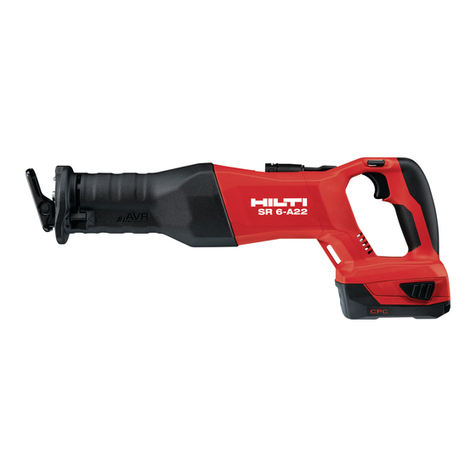
Hilti
Hilti SR 6-A22 User manual

Hilti
Hilti SR 30-A36 User manual

Hilti
Hilti SR 30 User manual
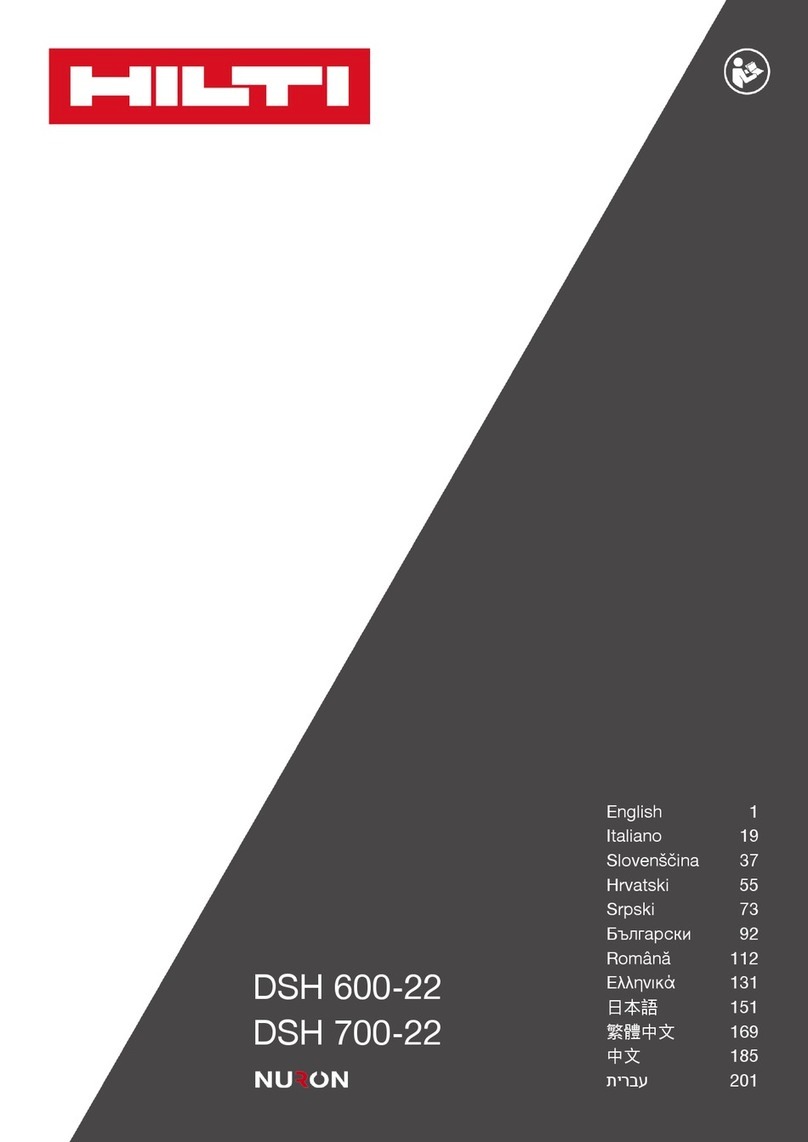
Hilti
Hilti Nuron DSH 600-22 User manual
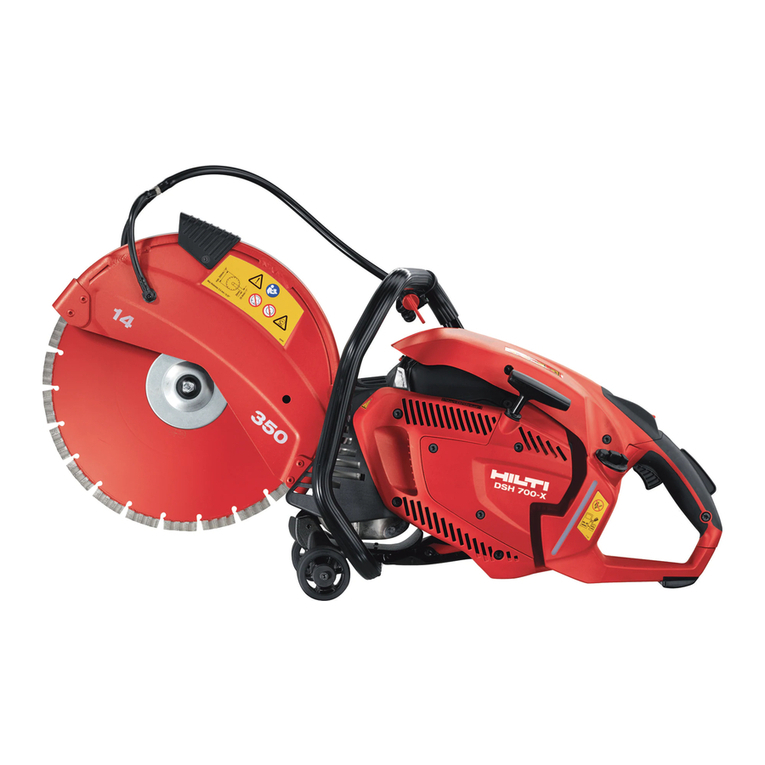
Hilti
Hilti DSH 700-X User manual

Hilti
Hilti WSR 900-PE User manual
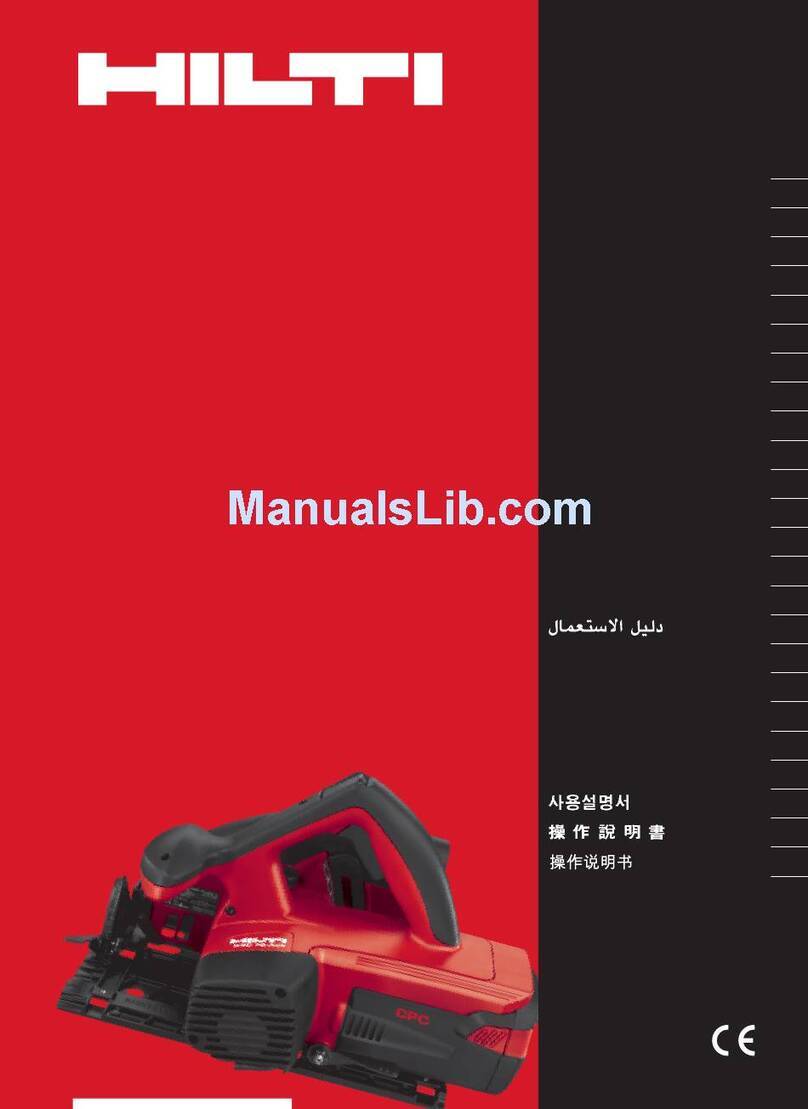
Hilti
Hilti WSC 70-A36 User manual
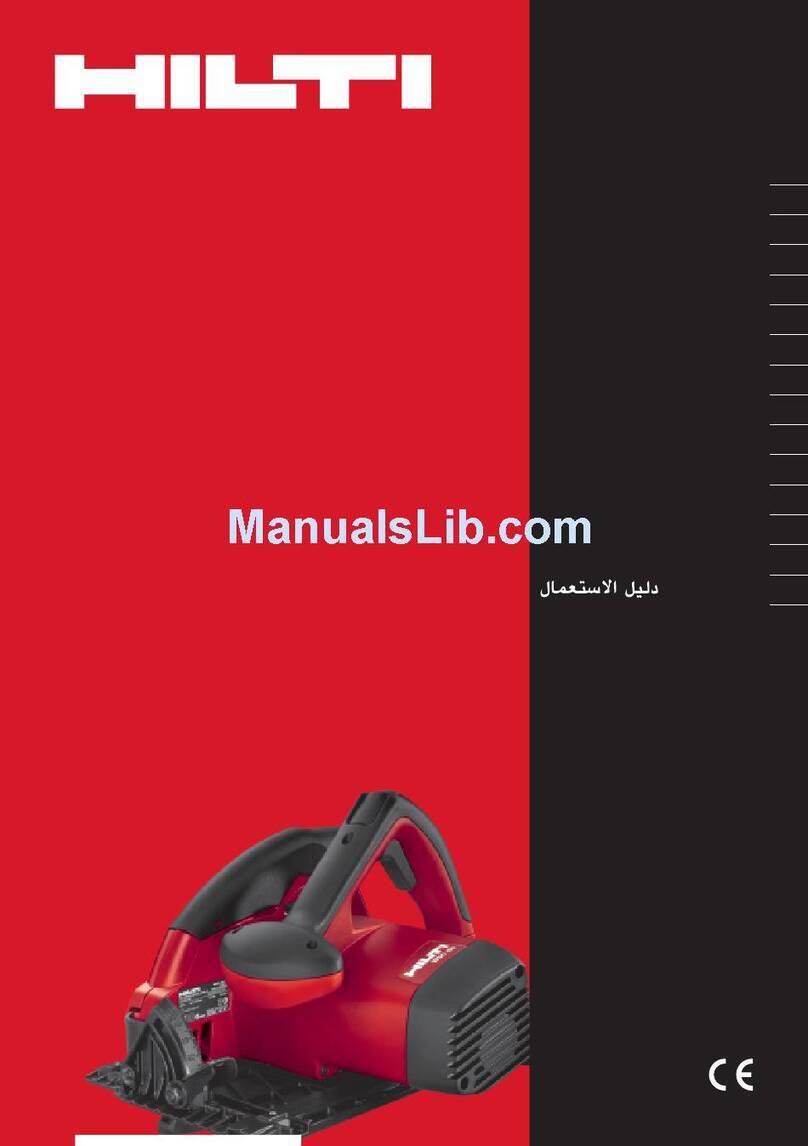
Hilti
Hilti WSC 70 User manual
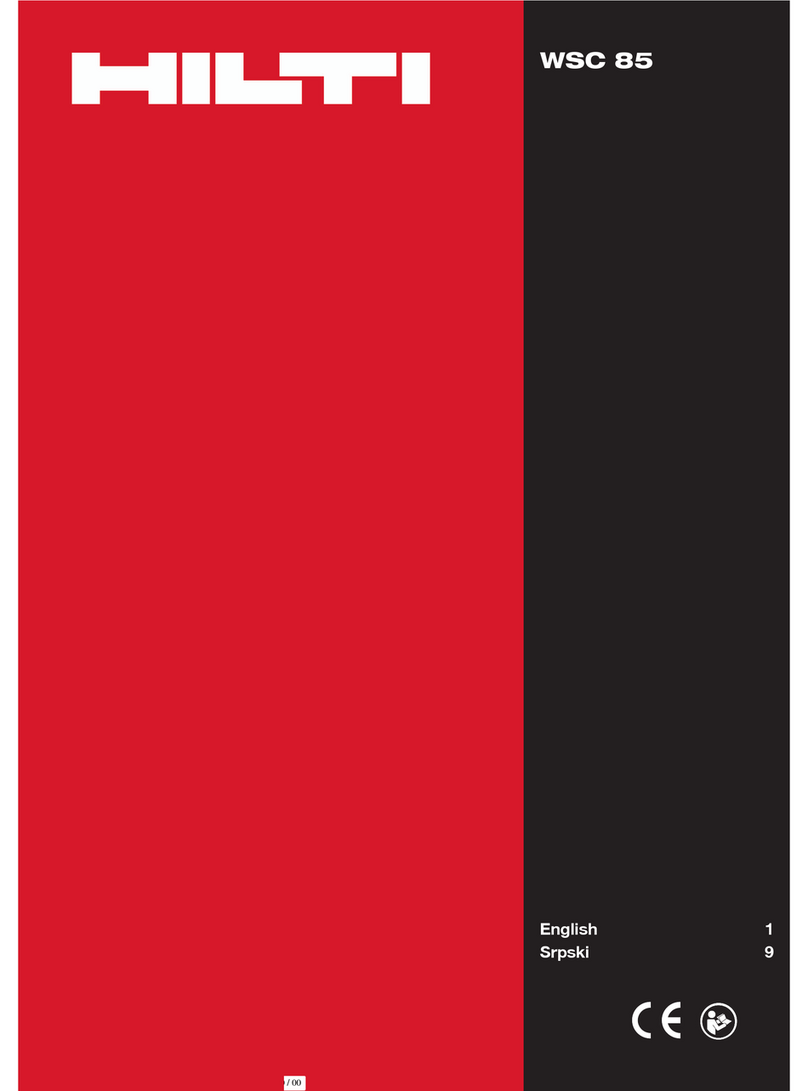
Hilti
Hilti WSC 85 User manual
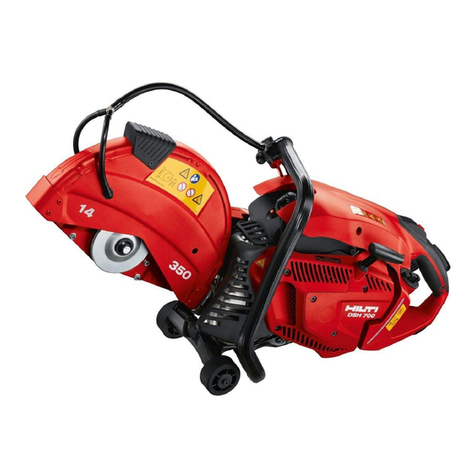
Hilti
Hilti DSH 700 User manual

Hilti
Hilti Nuron DSH 600-22 User manual

Hilti
Hilti SC 55W User manual





